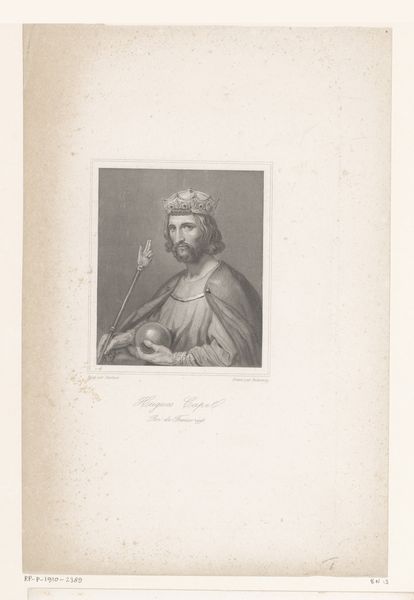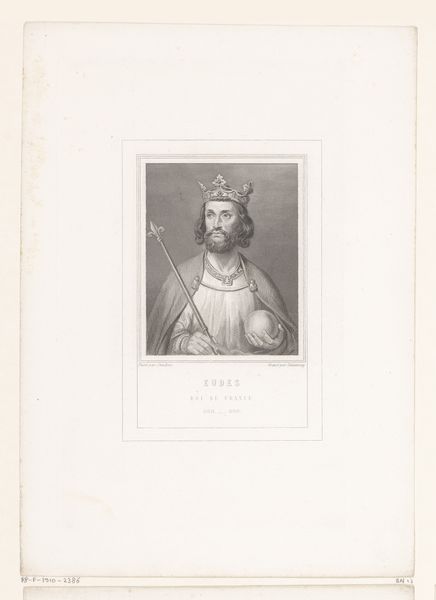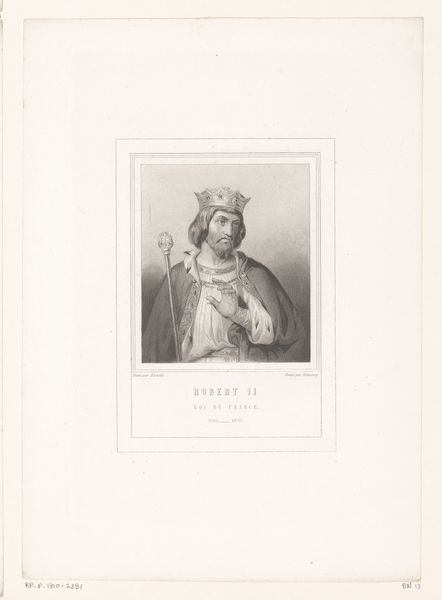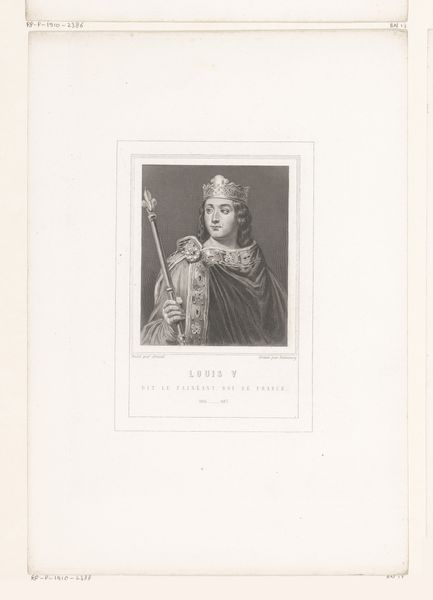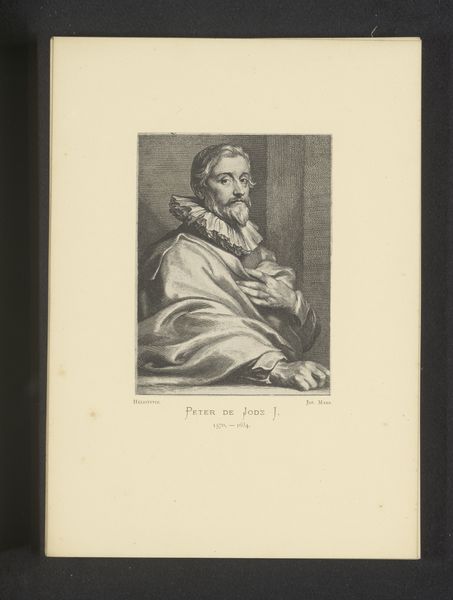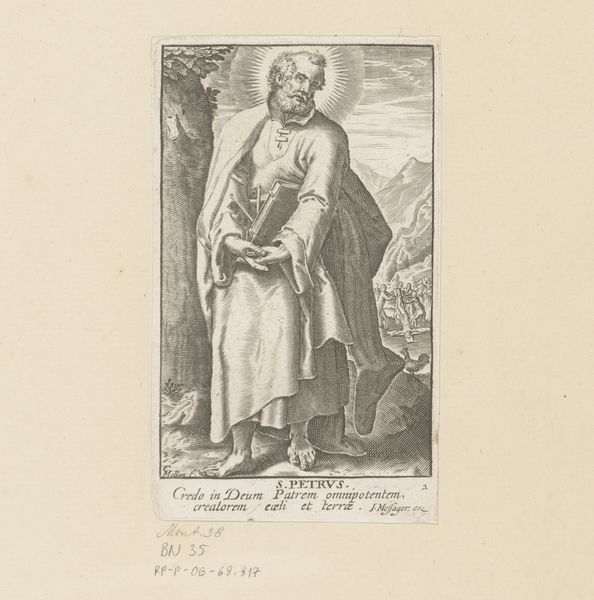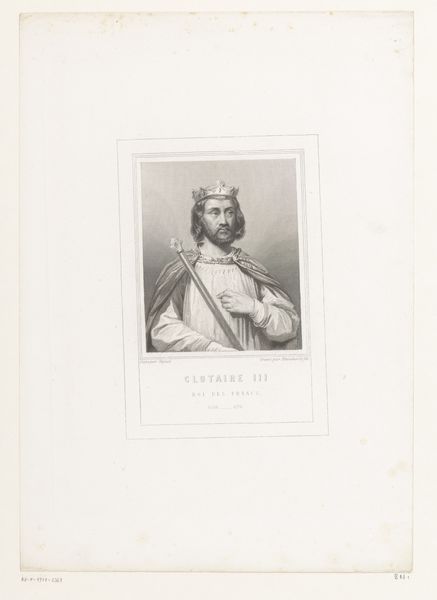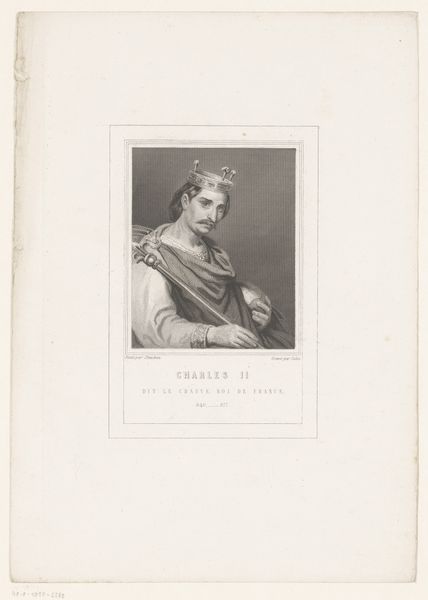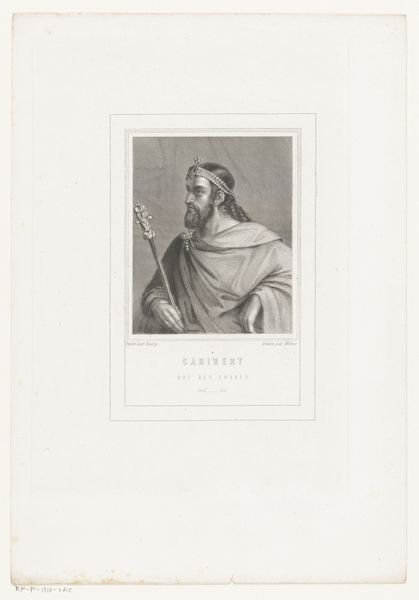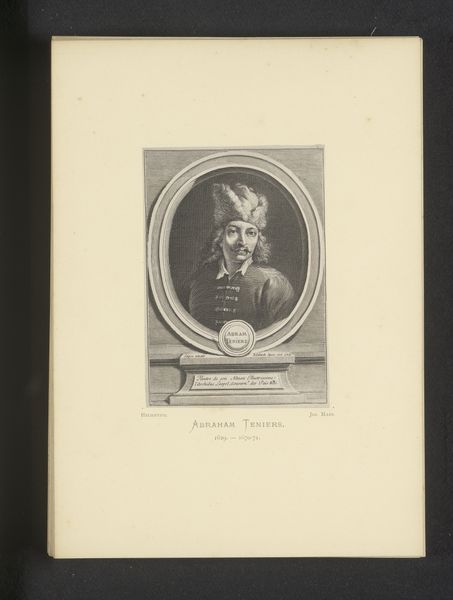
print, engraving
#
portrait
#
neoclacissism
# print
#
old engraving style
#
history-painting
#
engraving
Dimensions: height 98 mm, width 83 mm
Copyright: Rijks Museum: Open Domain
Ferdinand Delannoy made this portrait of Hugo Capet, King of France, sometime in the 19th century. The work's fine lines show it was created through engraving, a printmaking process where the artist carves into a metal plate. Look closely and you can see how the varying depths of the engraved lines create tone and texture, from the royal's face to the folds of his cloak. Engraving is a skilled, labor-intensive process. Each line had to be carefully incised to build up the image. In its time, engraving played a crucial role in mass communication, reproducing images for books, newspapers and portraits. While seemingly distant from today’s digital printing, it helped democratize image distribution. It made art accessible, and allowed for ideas and representations of power to circulate widely. Paying attention to materials and making helps us appreciate the artistry and labor involved. This engraving not only depicts a king, but also embodies a moment in the history of image production.
Comments
No comments
Be the first to comment and join the conversation on the ultimate creative platform.
